For Geoff Warn, being W.A. Government Architect is not a culmination of, but just another chapter in a rich career.

Geoff Warn likes working in teams. The Principal of With_Architecture Studio (formerly Donaldson Warn) and Western Australia Government Architect since 2013, he sees architecture and planning as inclusive, collaborative processes, commenting: “Architecture emerges from creative engagement with community and is always a function of relationships between people.”
Indeed, the tousled-haired Warn is gregarious and insatiably curious — a walking advertisement for life-long learning. He brings to his architecture and the Government Architect’s office a broad frame of reference: his Bachelor of Architecture and Master of Architecture Degrees were punctuated by a Bachelor of Arts in Comparative Literature. His substantial teaching portfolio includes Professor of Architecture at Curtin University from 2005 to 2010.
He has recently shepherded into play W.A.’s State Design Review Panel, which he says will bring benefits both to architectural practice in the state and to the community as a whole. “We’ll get better buildings and better places.”
The panel is made up of fifty practitioners, not just from architecture, but also from planning, landscape, transport and heritage. It also includes people from other states as an insurance against parochialism. It ensures proponents get good input from experienced people. It will take a while to settle down, he says, but the “level of discourse” he feels will reach a higher standard — a good thing, since he believes that such discourse is currently at a higher level in Sydney and Melbourne than it is in Perth. The panel, he says, will help developers become more confident of the value of good design. He gives the example of Perth’s resistance to high-density development and its chronic problem of ever-expanding suburbs – due, he argues, to poor-quality developments that attract community resistance.

Kings Park Environmental Education Awareness Centre by With_Architecture Studio, photography by Martin Farquarshon
“Being able to distinguish between a poor design, a good design and an excellent design is something we haven’t had the mechanism to do,” he says. “It also gives planners confidence because they can ‘share their load’ with a group of respected professionals.”
Warn is a vigorous supporter of local design, and that includes an informed and passionate respect for Perth’s architectural past. But his is a tough love. He laments the lack of confidence that sometimes leads W.A. to genuflect to outsiders who may not always be the best choice for a project and may not always have W.A.’s interests front of mind.
So, who is Geoff Warn? He was born in Perth, as were his parents and his grandparents – “one of the few”, he quips. After graduating in architecture from Curtin University – whose ‘brutalist’ architecture he admires – he “did some work overseas”.
“I graduated at the end of 1976, then in three months I was in New York with $90. I stayed six months, worked my way around and ended up going to London.”
But there was a recession on and it was hard to get work. “I had a job colouring in maps of the North Sea for Shell. I was in a flat in Highgate and I would go to the Highgate Library and read books on architecture.” After “the oil and gas job”, he worked for a small practice “measuring up hospitals” before buying a cheap second-hand car and setting off for Europe to look at as many buildings as possible.

Christ Church Grammar Preparatory School by With_Architecture Studio, photography by Ed Janes
When he got back he landed a job at Farrell Grimshaw. “It was incredibly rewarding working in a practice that had a very strong reputation in London – and in the early days of Foster and Rogers, Jim Stirling,” he says. “Those offices were all in a close walking distance and staff would often move from one to the other. I ended up renting a flat that was directly below Christine Hawley, who was the design partner of Peter Cook (she is now Professor of Architectural Design at the Bartlett, UCL), so I met Peter Cook a lot. “Christine would take me to the AA, so I met all that generation. Bolles Wilson and Zaha Hadid would all be at the bar. We would sometimes hear Charles Jencks give a history lesson.
“I met some stunningly good people in London. I was in awe of how good they were and that motivated me to learn more.” Back in Perth in 1981, concerned that he needed a more theoretical foundation to his work, he enrolled in a course at Murdoch University while teaching part-time at Curtin University and working as a sole practitioner doing hairdressing salon fit-outs, horse stables and veterinary clinics. “I would get up at six in the morning,” he recalls, “and study, go to work, then come home at night. I was married then and had a child. So, it was pretty full on. Living on the smell of an oily rag.”
This was the year he founded Donaldson and Warn with Dick Donaldson, whom he had originally met when they sat next to one another in the same studio. “All through Donaldson Warn,” here calls, “I was teaching a lot, which helped keep the practice going but also helped keep the brain going.”

Christ Churst Grammar School Refectory by With_Architecture Studio, photography by Acorn Photo
Over 32 years, the practice gained a formidable reputation, especially for educational projects – not to mention becoming the first architectural practice in Australia to be certified carbon-neutral by the Federal government in 2015. With the retirement of Donaldson in 2017, the practice re-branded as With_Architecture Studio, but continues to specialise in government high schools, private schools, some university work, and masterplans. “They are complex projects,” says Warn, “where you can exercise your organisational and teamwork skills. I like working in teams and with people who are smarter than I am – rather than trying to be the expert.”
Master planning and urban design have always been special interests. Although they didn’t win the competition, the Perth Foreshore Project helped garner the practice a reputation for visionary planning. Their scheme was published nationally. “We didn’t really look at the foreshore,” reflects Warn. “We re-designed the city where the foreshore was just a front yard. Many of those propositions — such as bringing the city down to the water and putting in significant government and commercial buildings— have now been picked up, not deliberately, but coincidentally, and implemented.”
The Government Architect office, he feels, is “a bit under-appreciated in the sense that it is over-reliant on the Premier or higher level support. That would be the same in all states, but it is still a shame because it can be very helpful to government”. Warn points out that it is a whole-of-government position and that they have “made some excellent in roads in other areas that are involved in the built environment: transport, rail, water management, as well as planning and architecture”. But he feels there is a lot more the office could do if it was not “pushed and pulled around by different departmental heads”.
Ever the learner, Warn has through his experience as Government Architect learned that it is easier to criticise government when you are not part of it. “I have a lot of respect for government and people who work in government,” he reflects. “But the checks and balances are very hard to understand if you are outside government.” This leads Warn to reflect on one of his favourite quotes, from boxing champion Mike Tyson: “Everyone’s got a plan until they get hit.”

INDESIGN is on instagram
Follow @indesignlive
A searchable and comprehensive guide for specifying leading products and their suppliers
Keep up to date with the latest and greatest from our industry BFF's!

From the spark of an idea on the page to the launch of new pieces in a showroom is a journey every aspiring industrial and furnishing designer imagines making.

CDK Stone’s Natasha Stengos takes us through its Alexandria Selection Centre, where stone choice becomes a sensory experience – from curated spaces, crafted details and a colour-organised selection floor.
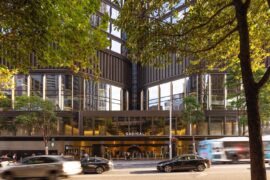
Rising above the new Sydney Metro Gadigal Station on Pitt Street, Investa’s Parkline Place is redefining the office property aesthetic.
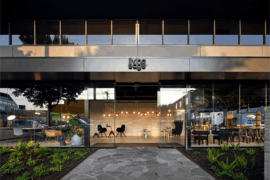
For Aidan Mawhinney, the secret ingredient to Living Edge’s success “comes down to people, product and place.” As the brand celebrates a significant 25-year milestone, it’s that commitment to authentic, sustainable design – and the people behind it all – that continues to anchor its legacy.
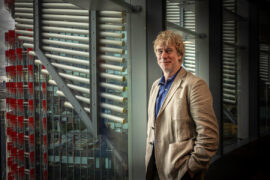
The Senior Design Director at RSHP reflects on Barangaroo South Masterplan during a visit to Sydney marking ten years since the completion of the first phase.
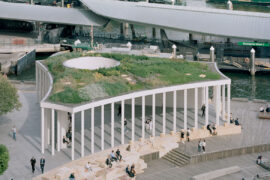
Pier Pavilion by Besley & Spresser provides a refreshing, architecturally thoughtful and versatile public space by the water at Barangaroo.
The internet never sleeps! Here's the stuff you might have missed
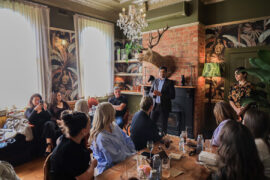
Guests joined Cosentino for a behind-the-scenes look at The Block homes, discovering new materials and creative partnerships.

CDK Stone’s Natasha Stengos takes us through its Alexandria Selection Centre, where stone choice becomes a sensory experience – from curated spaces, crafted details and a colour-organised selection floor.